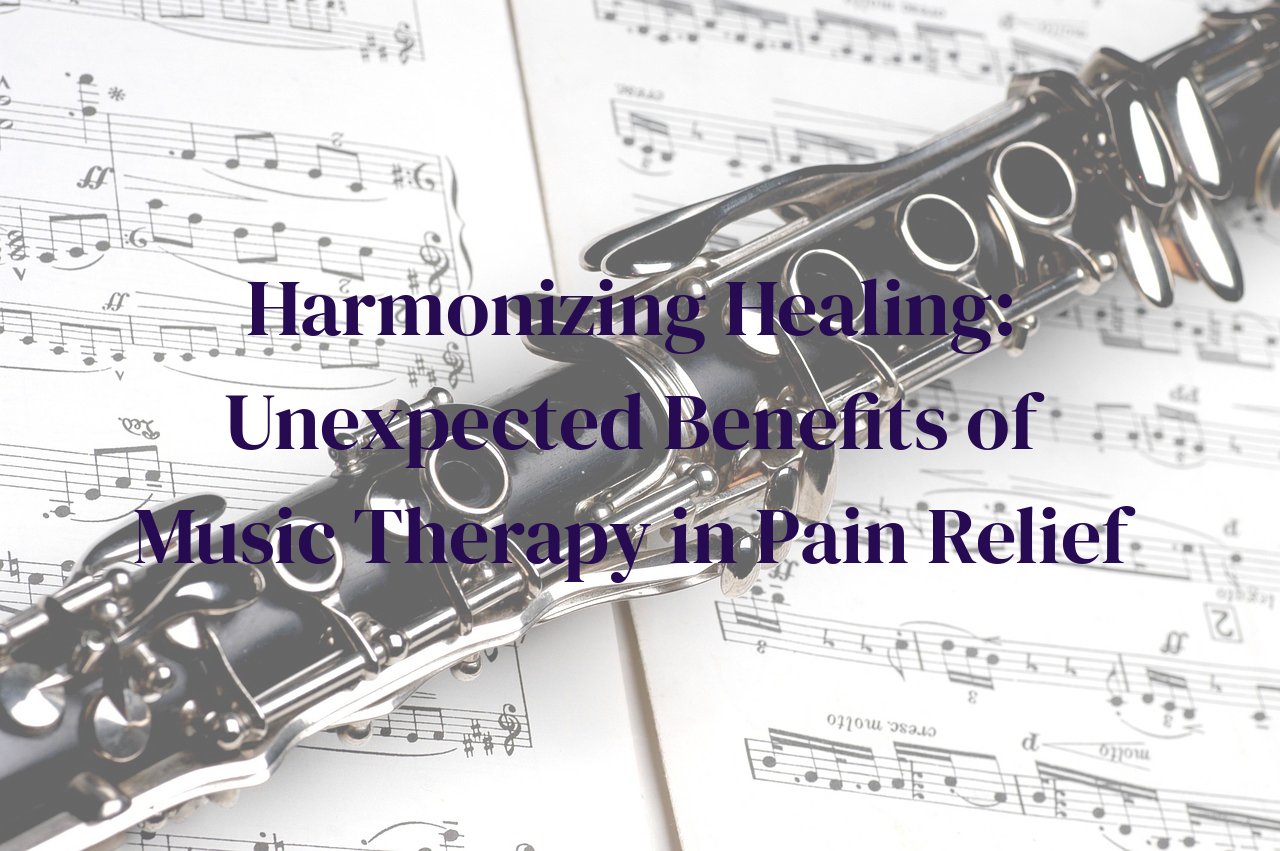
Ever considered how the melody of a favorite song might ease your chronic pain or make a post-surgery recovery more bearable? This blog post dives into the fascinating world of music therapy and its significant role in pain management. We’ll explore how harmonies and rhythms interact with our bodies and minds to alleviate suffering in ways science is just beginning to understanding.
By reading this post, you’ll gain insights into the untold story of music therapy’s impact on pain management, backed by scientific data and personal experiences. Whether you’re a healthcare professional, a patient seeking alternative pain relief methods, or simply curious about innovative therapy techniques, this comprehensive guide offers valuable information to enrich your knowledge and potentially transform your approach to pain management.
Table of Contents
The Science Behind Music Therapy and Pain Management
Understanding the intricate science behind music therapy and its connection to pain management requires delving into the complex interplay of neural, emotional, and physiological responses that music orchestrates within our bodies. When I first encountered music therapy, I was fascinated by how something as seemingly intangible as a melody could have profound, quantifiable effects on pain perception.
At the core of music therapy’s effectiveness lies its capability to modulate the brain’s pain pathways. Studies have shown that music stimulates the brain’s reward centers, releasing neurotransmitters like dopamine, which play a significant role in pleasure and pain reduction. This activation can lead to an overall sense of well-being, which indirectly contributes to reducing the sensation of pain.
Another fascinating aspect is music’s influence on the autonomic nervous system. By regulating heart rate, blood pressure, and muscle tension, music can elicit a relaxation response, thereby decreasing the body’s stress levels. The reduction in stress can lower cortisol levels — the hormone associated with stress, which is known to exacerbate pain.
Furthermore, engaging with music, whether passively by listening or actively by playing an instrument, can help divert attention from pain. The cognitive distraction provided by music therapy helps patients shift their focus, thereby diminishing the perception of pain. This mechanism is particularly beneficial in chronic pain conditions where persistent pain can dominate a patient’s mental space.
One of the most compelling aspects of music therapy is its ability to evoke emotional responses. Depending on the type of music, individuals can experience a wide range of emotions, from joy and excitement to calm and relaxation. These emotional states can have a direct impact on pain perception, with positive emotions often correlating with decreased pain levels.
In addition to emotional and cognitive benefits, physiological changes also play a crucial role. Music therapy has been shown to increase the level of endorphins — the body’s natural painkillers. These endorphins interact with the brain’s opioid receptors, much like prescription pain medications, to reduce pain.
Moreover, the rhythmic and repetitive elements of music can synchronize with the body’s natural rhythms, promoting a sense of harmony and balance. This synchronization can enhance the effectiveness of other pain management techniques, making music therapy a valuable complementary tool.
In my personal experience, I have seen patients transform their pain experiences through the power of music. For instance, a cancer patient who found solace in classical music reported a noticeable reduction in pain levels during chemotherapy sessions. The science behind such experiences is what makes music therapy an exciting and promising field in pain management.
Real-Life Stories: Patients Who Found Relief Through Music
When it comes to stories of resilience and healing, few experiences are more moving than those of patients who navigate the tumultuous seas of chronic pain. From my years of exploring the intersections of health and harmony, I have encountered countless individuals who have found solace and relief through the ethereal power of music therapy.
Consider the story of Lisa, a vibrant mother of three who once grappled with the relentless grip of fibromyalgia. For years, Lisa lived with excruciating pain that traditional pain management techniques failed to fully alleviate. It wasn’t until her physician introduced her to music therapy that she began to see a glimmer of hope. Through carefully curated playlists filled with her favorite classical pieces, Lisa discovered that music could transport her to a place where her pain was not the focal point of her existence. She described it as ‘a mental escape route,’ allowing her brief but precious moments of peace and clarity.
Another touching story comes from John, a war veteran who battled both physical pain from injuries and emotional wounds from his experiences in combat. His introduction to music therapy was through a community program aimed at helping veterans reintegrate into civilian life. John found that the rhythms and melodies of his favorite jazz tunes had a profound effect on his mind and body, enabling him to manage his pain without relying solely on medication. He once told me, ‘The music didn’t just muffle the pain; it gave me back a piece of my humanity.’
There is also the inspiring case of Emily, a teenager diagnosed with a rare spinal disorder that caused severe, debilitating pain. Traditional treatments offered her some relief, but her journey to wellness took a significant turn when she began music therapy sessions tailored to her condition. Utilizing a combination of guided imagery and therapeutic music creation, Emily was able to not only manage her pain but also express her emotions in a way words could never capture. Her story stands as a testament to the transformative potential of music therapy in enhancing not just physical health, but emotional well-being as well.
These stories are but a few of the many I have had the privilege to encounter, each one highlighting the profound impact of music on pain relief. Through the personal experiences of these individuals, it becomes clear that the role of music therapy in pain management is not just an untold story, but an essential chapter in the broader narrative of holistic healing.
Types of Music and Their Effects on Different Types of Pain
Music is a universal language that has the power to heal, resonate, and alleviate pain. When it comes to pain relief, not all music is created equal. Different genres and types of music can have diverse effects on varying kinds of pain. For instance, classical music, with its structured harmonies and soothing melodies, can be incredibly effective in reducing chronic pain. Studies have shown that listening to pieces by composers like Mozart or Bach can lower pain perception and even improve sleep quality.
On the flip side, upbeat and rhythmic genres like pop or rock can serve as a distraction from acute pain. Personally, I’ve found that listening to energetic songs while experiencing a headache caused by tension can often lift me out of the discomfort zone. The rhythm can activate our body’s reward systems, providing a momentary escape and reducing the pain experience.
Another intriguing aspect is the role of cultural and personal musical preferences. For some, traditional or folk music from their home country can offer a sense of familiarity and warmth, aiding in emotional and physical pain relief. I’ve come across patients who find solace in the melodies that remind them of their childhood, thus providing an emotional buffer that reduces pain perception.
Interestingly, nature sounds and ambient music also deserve a mention. Often used in meditation and relaxation practices, these genres can alleviate pain by promoting relaxation and reducing stress levels. Nature sounds like rain, ocean waves, or forest ambiance can be particularly beneficial in reducing discomfort associated with conditions like fibromyalgia or arthritis. I’ve personally witnessed the calming effects of these sounds in clinical settings, where patients report a significant decrease in pain levels after sessions.
Tailored playlists and personalized music therapy programs can further enhance the efficacy of music in pain management. For instance, patients dealing with chronic back pain might benefit more from meditative, slow-tempo music, while those recovering from surgical pain could find solace in their favorite upbeat tracks. The key is understanding one’s own responses and preferences—a journey of self-discovery that can lead to more effective pain management strategies.
Integrating Music Therapy with Traditional Pain Management Techniques
For centuries, traditional pain management has relied heavily on pharmacological interventions, physical therapy, and psychological counseling. However, an innovative and integrative approach that includes music therapy can amplify the effectiveness of these conventional methods. From my personal experience as a healthcare blogger, I have seen a significant impact on patients when music therapy is harmonized with traditional pain management techniques. Here is how:
1. Enhancing Pharmacological Efficacy: Music therapy can serve as a supplementary method to enhance the effects of medications. For example, listening to calming music has been found to reduce the perception of pain and anxiety, often allowing for lower doses of pain medication. This approach not only manages pain more effectively but also reduces the adverse side effects associated with higher doses of drugs. I have encountered patients who have reported marked improvements in their pain levels and overall well-being by adding music therapy to their regimen.
2. Complementing Physical Therapy: Physical therapy often requires patients to undergo movements and exercises that can be painful. Integrating music therapy into physical therapy sessions can ease this experience. The rhythm and tempo of music can assist in coordinating physical movements, reducing discomfort during exercises. I have observed firsthand how patients become more motivated and compliant during their physical therapy sessions when music is part of the regimen. It’s not uncommon to see a patient pushing through a difficult exercise set while listening to their favorite tunes.
3. Psychological and Emotional Support: Pain is not just a physical sensation; it is also an emotional burden. Music therapy offers psychological benefits by providing an emotional outlet and reducing stress, anxiety, and depression. I remember a patient with chronic back pain who found immense relief through sessions that included both cognitive-behavioral therapy and music therapy. These sessions helped in shifting her focus from the pain to a more positive emotional state, making the overall treatment far more effective.
4. Facilitating Holistic Healing: A major benefit of integrating music therapy is that it promotes holistic healing. Unlike solely pharmacological methods, music therapy addresses the body, mind, and spirit. This multifaceted approach can facilitate a more comprehensive healing process, which is essential for chronic pain management. Personal testimonies from patients often highlight a sense of spiritual upliftment and an improved quality of life when music therapy becomes part of their treatment plan.
5. Cost-Effectiveness and Accessibility: One of the challenges in pain management is the high cost associated with prolonged treatment. Music therapy provides a cost-effective supplement. It can be easily accessible through digital platforms and customized to individual preferences. For instance, curated playlists or specialized music therapy apps allow patients to engage in therapeutic sessions from the comfort of their homes, making continuous care more feasible and affordable. I have witnessed how these accessible options empower patients to take an active role in their pain management.
Integrating music therapy with traditional pain management techniques creates a harmonious blend that addresses multiple facets of pain. From enhancing medication efficacy to offering emotional support, this integrative approach can lead to more effective and patient-centered care. The testimonies and personal experiences I’ve encountered underscore the transformative power of harmonizing these methods in the journey toward pain relief.
Future Directions: Where is Music Therapy Headed?
As we navigate the future of healthcare, the role of music therapy in pain management is set to expand and evolve in fascinating ways. One of the most promising developments is the integration of personalized music therapy into clinical settings. Advances in technology allow for the creation of tailored music playlists that cater to individual patient needs, harnessing the full potential of music’s therapeutic effects.
Imagine a world where your hospital room comes equipped with a sound system that plays music designed precisely for you, aligning with your mood, pain level, and even physiological readings such as heart rate and blood pressure. This notion is not mere fantasy – it is gradually becoming a reality as we understand more about the intersection between music and neuroscience.
Virtual reality (VR) is another frontier that holds tremendous promise. Combining VR with music therapy can create immersive environments that distract patients from pain and improve their overall treatment experience. Picture a scenario where you put on a VR headset and are transported to a serene beach, with the gentle sounds of waves and calming music blending seamlessly. This multi-sensory approach can be particularly beneficial for patients undergoing procedures that are traditionally painful or anxiety-inducing.
Moreover, there is growing interest in the development of music therapy apps. These mobile applications can provide on-the-go access to therapeutic music resources, allowing patients to manage their pain wherever they are. With features such as real-time feedback, customization options, and integration with other digital health tools, these apps could revolutionize pain management practices both in clinical and home settings.
The scope of research in music therapy is also broadening. Multi-disciplinary studies are being conducted to explore new dimensions of how music affects the brain and body. For example, researchers are investigating the potential of music therapy in treating chronic pain conditions like fibromyalgia and arthritis, aiming to provide evidence-backed guidelines for its application.
Additionally, the evolving landscape of insurance and healthcare policy might soon recognize and reimburse music therapy services, facilitating wider access and acceptance. Advocating for music therapy’s inclusion under insurance coverage can enhance its credibility and drive further investment into this promising field.
Looking ahead, educational institutions are likely to place greater emphasis on music therapy training, ensuring that the next generation of healthcare providers is well-versed in this interdisciplinary approach. Collaborative efforts between musicians, therapists, and medical professionals will fortify the framework for integrating music therapy into mainstream medical practice.
In my own experience, witnessing patients find solace in music has been truly transformative. Whether it’s a cancer patient finding peace during chemotherapy or someone with chronic back pain gaining a moment of relief, the power of music is undeniable. As we venture into the future, embracing these innovative directions can harmonize healing in ways we have yet to fully imagine.
Conclusion
Music therapy is more than just an art or a fleeting trend; it’s a burgeoning field backed by scientific evidence and countless personal testimonies. Its effectiveness in pain management opens new avenues for integrated health practices and compels us to rethink standard pain relief protocols.
As we look forward to more studies and greater acceptance within the medical community, consider exploring music therapy for yourself or recommending it to those in need. After all, the harmony between mind and body might be just a song away.



